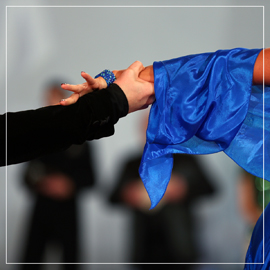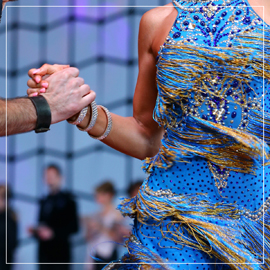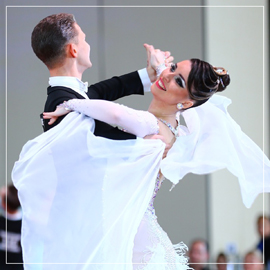Types of Dance
Types of Ballroom Dance Lessons
Ballroom dance can be enjoyed socially and in dance competitions, and is sometimes referred to as “partnership dancing”, because it is a type of dance that requires a dance partner. Ballroom dancing originated in the 16th century from dances held in the royal courts. There’s also evidence of influence from folk dances of the era – for example, the Waltz began as an 18th century Austrian folk dance.

Two Styles of Ballroom Dance
The International Style of ballroom dance was introduced in England in the early 1800s and became popular throughout the rest of the world by the 19th century, through the music of Josef and Johann Strauss. International Style is categorized into two very distinct sub-styles: Standard (or “Ballroom”), and Latin, and is typically used more in the competitive dance circuit.
Here in the United States, ballroom dance adapted into the American Style between 1910 – 1930 mainly due to the influence of American jazz music, a more social approach to dancing and the iconic dance and choreography talents of Mr. Fred Astaire. Over the years, American Style has expanded to include dances such as Mambo, Salsa and West Coast Swing, and has always been driven by the constant development of music around the world. The American Style of ballroom dance is categorized into two distinct sub-styles: Rhythm and Smooth, and is used in both social and competitive ballroom dance arenas.
The Differences Between International & American Styles
International Style is without a doubt the classic “old school” style of Ballroom. In International Standard, dance partners must remain in a closed dance position continually (meaning they stand in front of each other, in body contact throughout the dance). American Smooth is similar to its counterpart from overseas, but does allow the dancers to separate (called “open position”) in their dance frame. In the beginning stages of training, International Style is more disciplined than American Style (which typically starts first as a social Hobby, then progresses to Sport).

American Style can also include “Exhibition” solo work which allows the couple more freedom in their choreography. Both styles can be very technical with a high level of proficiency requirements, but there is more freedom in the American Style when it comes to closed figures, where the International Style is more strict with fewer figures offered. In the world of ballroom dance competition, there are also differences between the dresses or gowns worn for American versus International Styles. Because dance partners stay in closed position when dancing International, these dresses often have floats coming from the tops which would not be conducive for American Style, which features both open & closed positions.

Getting YOUR Dance On
At Fred Astaire Dance Studios of Greensboro, North Carolina, we offer instruction in both International and American Ballroom Styles, and then some! And as a Fred Astaire dance student, you choose which dance style you’d like to learn first based on what’s most appealing to you, and your individual dance goals. For example, individuals interested in high-energy lessons for improved physical health would likely choose a different style than couples looking for an elegant First Dance for their wedding. No matter your age, ability level or whether you’re planning to take lessons with a dance partner or on your own – you’ve come to the right place on Mill Street.
To learn more about each type of dance and view a demonstration video, simply click on the links to the right. Then give us a call at Fred Astaire Dance Studios, and be sure to ask about our money-saving introductory offer for new students. Together, we’ll get you started on your personal dance journey!

